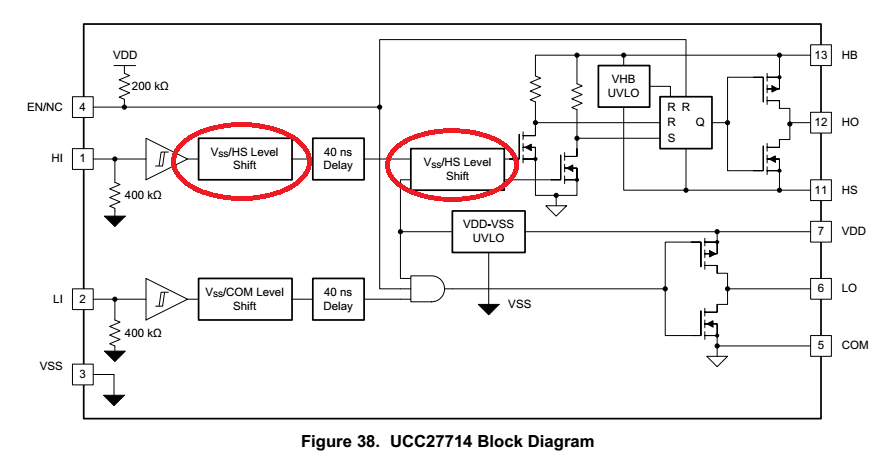Hi,
in the internal circuit for HI to HO level shift. It's two Vss/HS level shift, but I'm confused, why it has to be two Vss/HS level shift?
Is the left Vss/COM level shift, and the right side is COM/HS level shift?
Besides, could you please explain the two MOSFETs connected to the right Vss/HS level shift from HB to COM. How does it work and what's the purpose of these 2 MOSFETs?


